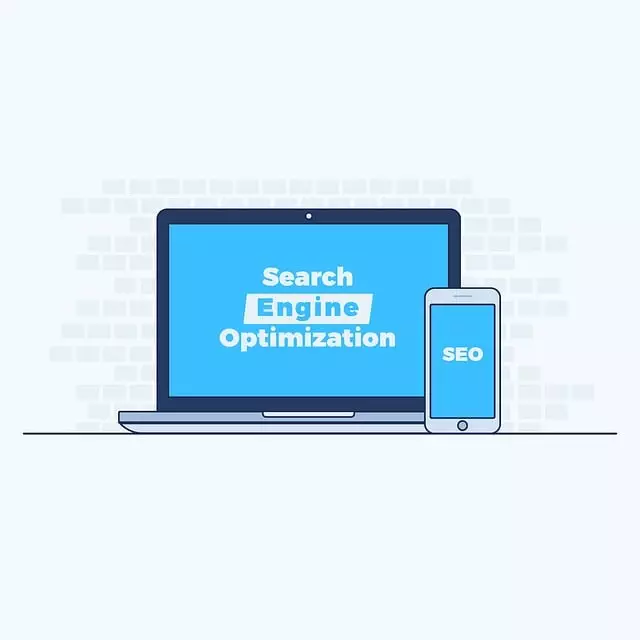White-Hat SEO Techniques prioritize ethical, long-term strategies for online success. These include creating high-quality content, improving site accessibility and speed, and focusing on keyword relevance. By using tools to research popular search terms and integrating them naturally into website content, White-Hat SEO enhances search engine understanding and improves rankings. On-page optimization, mobile usability, and strategic link building from reputable sources further strengthen online presence. Regular technical SEO checks ensure efficient crawling and indexing by search engines. Adopting these techniques is crucial for maintaining a robust digital footprint, adapting to algorithm updates, and appealing to both users and search algorithms.
In today’s competitive digital landscape, a robust SEO strategy is essential for online visibility. This article navigates the safe and ethical approach to search engine optimization (SEO), focusing on proven White-Hat SEO Techniques. We’ll explore key components such as understanding fundamental strategies, conducting thorough keyword research, optimizing on-page content, implementing effective link building practices, addressing technical considerations, and continuously monitoring performance. By embracing these tactics, businesses can achieve sustainable growth without cutting corners.
Understanding White-Hat SEO Techniques: The Foundation of Ethical Search Optimization

White-Hat SEO Techniques are the cornerstone of ethical search engine optimization, emphasizing long-term sustainability and user-centric practices. Unlike Black-Hat methods that employ deceptive strategies to manipulate search rankings, White-Hat techniques focus on creating valuable content, ensuring website accessibility, and building high-quality backlinks organically. These strategies not only align with search engines’ guidelines but also foster a positive user experience.
By prioritizing quality over quantity, White-Hat SEO involves keyword research, optimizing web pages for relevant topics, and enhancing site speed and mobile usability. Content creators and marketers who embrace these techniques build trust with both search algorithms and their audience. This approach ensures that websites remain visible in search results over time, contributing to a robust and honest online environment.
Keyword Research: Finding Relevant Terms for Long-Term Success

Keyword research is a cornerstone of successful digital marketing, and it’s no different for SEO. Using White-Hat SEO Techniques, professionals can uncover valuable insights into what terms potential customers are searching for. By identifying relevant keywords with high search volume and low competition, businesses can create content that resonates with their target audience, driving organic traffic and boosting online visibility over the long term.
This process involves an in-depth analysis of industry trends, competitor strategies, and user behavior. Tools like Google Keyword Planner, SEMrush, or Ahrefs can assist in uncovering not only popular search terms but also related queries that may have lower competition. Incorporating these keywords naturally into website content, meta descriptions, and backlink profiles helps search engines understand the site’s focus, thereby improving its ranking potential for relevant searches.
On-Page Optimization: Crafting High-Quality Content and Enhancing User Experience

On-Page optimization is a crucial component of any successful White-Hat SEO Techniques strategy. Crafting high-quality, relevant content that resonates with your target audience is paramount. This involves thoroughly researching and understanding their needs, pain points, and search queries to create content that not only answers their questions but also captivates them. Quality content not only improves user satisfaction but also encourages longer sessions on your site, reducing bounce rates and signaling to search engines that your site offers genuine value.
Beyond content, enhancing the user experience is equally vital. This means ensuring your website is mobile-friendly, fast-loading, and easy to navigate. A clean, intuitive design and clear page hierarchy help visitors find what they’re looking for quickly. Incorporating features like search functionality, breadcrumbs, and internal linking can significantly improve usability, encouraging users to explore more of your site and reducing exit rates. Remember, a happy user is a signal to search engines that your site is trustworthy and worth ranking highly.
Link Building Strategies: Earning Quality Backlinks for Better Rankings

Link building is a cornerstone of successful White-Hat SEO Techniques, but it requires finesse and strategy to ensure effectiveness and avoid penalties. The key lies in acquiring high-quality backlinks from reputable sources that align with your niche. This organic approach involves creating valuable content that naturally attracts links, such as comprehensive guides, research studies, or interactive tools. By consistently contributing to industry publications, engaging with influencers, and fostering partnerships, websites can build a robust backlink profile.
Additionally, reaching out to sites with similar audiences but lower authority can be mutually beneficial. Guest blogging, for instance, allows you to share your expertise while earning a valuable link back to your site. However, it’s crucial to focus on relevant links from credible domains, as Google considers the quality and context of backlinks when determining search rankings.
Technical SEO Considerations: Ensuring Your Website is Crawled and Indexed Efficiently

When implementing Technical SEO Considerations, the focus should be on employing White-Hat SEO Techniques to ensure your website is easily crawled and indexed by search engines. This involves optimizing crucial technical elements like site speed, mobile-friendliness, XML sitemaps, and robots.txt files. Fast loading times and a responsive design cater to user experience, which directly impacts search rankings. Additionally, providing clear navigation through an XML sitemap allows search engine crawlers to efficiently scan and index your website’s content.
Robots.txt files direct these crawlers on what pages or sections to access, ensuring essential data is indexed while protecting sensitive areas. Regularly auditing and updating these technical aspects not only enhance visibility but also contribute to a robust online presence that resonates with both search engines and users alike.
Monitoring and Adjusting: Tracking Performance and Staying Ahead of Algorithm Updates

In the dynamic landscape of search engine optimization (SEO), staying ahead is paramount. Monitoring and adjusting your strategies are key components of successful White-Hat SEO Techniques. Regularly tracking website performance allows you to identify what’s working and what isn’t, enabling data-driven decisions. By analyzing key metrics like organic traffic, keyword rankings, and bounce rates, you gain insights into user behavior and search engine preferences. This continuous monitoring ensures your content remains relevant and optimized in line with algorithm updates.
Staying informed about algorithm changes is crucial for long-term SEO success. Search engines like Google frequently update their algorithms to enhance user experience and combat manipulative practices. Proactive strategists stay ahead of the curve by following industry news, analyzing competitor moves, and engaging in ongoing education. Regularly updating your content, optimizing meta tags, and refining technical aspects of your site can help maintain or improve search rankings, ensuring your online presence remains robust and visible.
